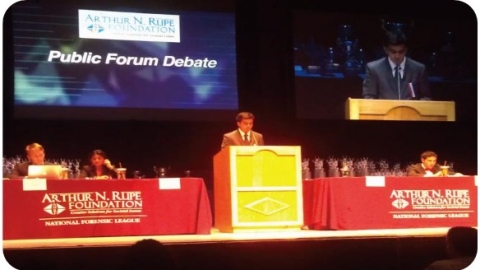Evidence in case writing.
Eight types of evidence:
Anecdotal(轶事的) evidence-Evidence from individual examples
Statistical evidence-Collected, organized, and interpreted data
Analogical(类推的) evidence-Things are similar in more than one aspect
Visual evidence-Evidence observed by sight
Empirical(经验主义的) evidence-Illustrate the future using the past
Testimonial(证明的,推荐的) evidence-Evidence based on the credibility of the author, often cites or refers to other evidence
Physical evidence-A physical object that inplies something
Circumstantial evidence-Inference connects the evidence to a conclusion of fact
Case writing-Speech structure
1.Introduction
To get the attention from the judges and the audience, we can use an AGD. It can be a startling statement, series of statistics, a quotation, or an anecdote.
Then, after a link sentence, we can explain how serious the problem is and how it may harm people. After that, trasit to the main body.
2.Body
Three contentions or more can be used to support the stand on the topic. Each of them may contain several arguments. The British philosopher Stephen Edelston Toulmin established the Toulmin Model of Argument. It contains a claim, a ground, and a warrant. The ground provides evidence for the claim, and often it can be quotations, reports, findings, evidence, reasoning, or statistics. The warrant connects the claim with the ground. For example, generalization helps the truth hold for a larger group.
3.Conclusion
Conclude by reviewing the main point, restating the thesis, finishing an anecdote, and leaving last impression.
Analyzing the topic includes information gathering and organization.
When gathering information, 5 aspects should be concerned: currency, relevance, authority, accuracy and purpose.
Currency: The timeliness of the information
Relevance: Refers to the importance of the information for your need
Authority: Who is the author and what are his credentials or organizational affiliations
Accuracy: The reliability, truthfulness and correctness of the content
Purpose: The reason why the information exists
Information Organization
The presentation of information can be divided into introduction, the main body, and conclusion.
Introduction: states the main issues
Main body: develops what you want to say about each of the main points or ideas
Conclusion: repeats the ideas and the purpose
There are 5 common modes of organizing the information.
Temporal organization: includes chronological order, reverse order, and inquiry order. For example, time order is a form of chronological order.
In conclusion, research progress includes the following 7 steps.
Identify and develop your topic, find background information, use catalogs to find books and media, use indexes to find periodical articles, find additional internet resources, evaluate what you find, and finally, cite what you find using a standard format.
Topic overview
1.A topic is to make clear what is being examined.
2.There are topics of fact, value and policy. The facts include existence and prediction. Topics of value discuss the worth of something. Topics of policy tells us what should be done.
3. A good topic keeps the discussion on track, helps one reach action, and explore strengths and weaknesses. It advocates a change from the present system and describes it clearly. That is to tell the way and the derection we change. One topic can only have one central idea.
Be sure to use neutral terminology to avoid placing the conside at a disadvantage. A good topic should also be current, and balanced. That is to say, each side of it must be discussed. Last but not least, a topic should also contain a lot of information so that one can research on the subject.
This lesson tells me what the process of a public forum debate is. It is relatively more formal and provides the teams more time to crossfire. This is certainly more effective in improving the students' abilities. What's more, debating also improves reading skills.
-What is debate?
-It's an exchange of arguments, which includes claim and warrant.
-Types of debate 4
-policy, parliamentary, Lincoln Douglas and public forum.
-The timing schedule.
-


